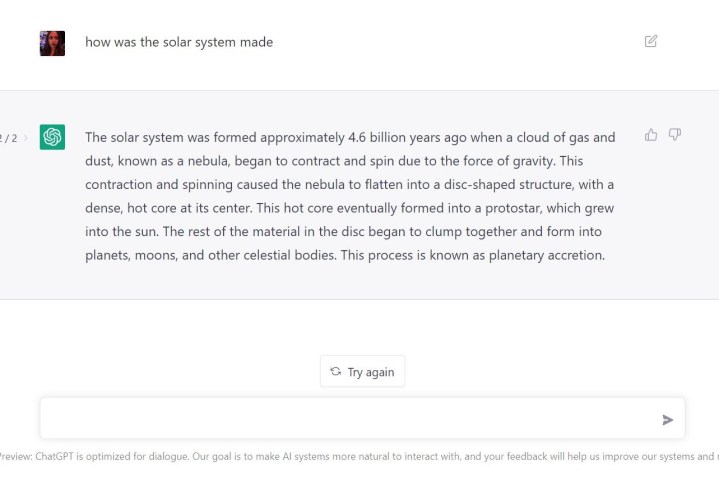Artificial Intelligence, otherwise known as AI, has been dominating the news for the past few years, and of all of the potential chatbots you can use ChatGPT stands out as a ground breaking development which has captured global attention from businesses down to personal use.
From its impressive capabilities and recent advancements to the heated debates surrounding its ethical implications, ChatGPT continues to make headlines. It’s latest advancement – ChatGPT-5 – is on the horizon with an expected release at some point in August.
Whether you’re a tech enthusiast or just curious about the future of one of the best AI chatbots , dive into this comprehensive guide to uncover everything you need to know from the creator of the ChatGPT down to how to use the artificial intelligence.
What is ChatGPT?
ChatGPT (which stands for Chat Generative Pre-trained Transformer) is an AI chatbot , meaning you can ask it a question and it will generate a reply. However, this type of artificial intelligence is set apart from assistants like Siri or Google Assistant because it uses LLM (large language model) which is trained on massive amounts of data to generate human-like responses. They’re not built for a specific purpose like chatbots of the past which just spit out predetermined answers — they’re a whole lot smarter.
The current version of ChatGPT is based on the GPT-4 model, but we’re expecting the GPT-5 model to release imminently. The current model was trained on all sorts of content including websites, books, social media, news articles, and more — all fine-tuned in the language model by both supervised learning and RLHF (Reinforcement Learning From Human Feedback).
Who created ChatGPT?
ChatGPT was created by OpenAI, a San Francisco-based AI research lab. OpenAI was originally founded as a non-profit organization in 2015 with the intention of developing safe and beneficial artificial intelligence. There were multiple rounds of large investments from names like Elon Musk.
OpenAI later transitioned to a for-profit structure in 2019 and is now led by CEO, Sam Altman. It runs on Microsoft’s Azure system infrastructure and is powered by Nvidia’s GPUs, including the new supercomputers just announced this year .
Microsoft has invested heavily in OpenAI since 2019 as well, expanding its partnership with the AI startup in 2021 and again in 2023, when Microsoft announced a multi-billion dollar round of investments that included naming its Azure cloud as OpenAI’s exclusive cloud provider.
When was ChatGPT released?
ChatGPT was originally released to the public in November 2022, running off of the GPT-3.5 model. Ever since, it’s had multiple advancements implements in order to improve the system leading to the current version which uses the GPT-4 model.
GPT-3 was first launched in 2020 but was licensed exclusively to Microsoft, GPT-2 released the year prior to that, though it was never used in the public-facing ChatGPT system.
How to use ChatGPT
To use ChatGPT, open up a web browser and go to ChatGPT.com . If you’d like to maintain a history of your previous chats, sign up for a free account. You can use the system anonymously without a login if you prefer.
Users can opt to connect their ChatGPT login with that of their Google-, Microsoft- or Apple-backed accounts as well. At the sign up screen, you’ll see some basic rules about ChatGPT, including potential errors in data, how OpenAI collects data, and how users can submit feedback. If you want to get started, we have a roundup of the best ChatGPT tips .

Using the system itself is very simple, just type your prompt into the text box and the chatbot will respond. You can ask ChatGPT just about anything from very simple conversations and yes/no questions down to asking the chatbot to research entire projects for you.
If you don’t get the result you want, you can adjust or build on your original prompt which the AI will remember – it may just be the case that ChatGPT needs more instructions.
For example, starting with “Explain how the solar system was made” will give a more detailed result with more paragraphs than “How was the solar system made,” even though both inquiries will give fairly detailed results.
Take it a step further by giving ChatGPT more guidance about style or tone, saying “Explain how the solar system was made as a middle school teacher.”
You also have the option for more specific input requests, for example, an essay with a set number of paragraphs or a link to a specific Wikipedia page. We got an extremely detailed result with the request “write a four-paragraph essay explaining Mary Shelley’s Frankenstein.”
ChatGPT is able to complete the majority of tasks thrown its way with the exception of physical tasks – not for lack of knowledge, if you ask the chatbot how to fold clothes, it will be able to tell you, the only thing stopping it is the lack of interface also known as its own working arms and legs.
You can’t ask absolutely anything, though. OpenAI has safeguards in place in order to “build a safe and beneficial artificial general intelligence.” That means any questions that are hateful, sexist, racist, or discriminatory in any way are generally off-limits.
Since its launch, people have been experimenting to discover everything the chatbot can and can’t do — and the results have been impressive, to say the least . Learning the kinds of prompts and follow-up prompts that ChatGPT responds well to requires some experimentation though.
Much like we’ve learned to get the information we want from traditional search engines, it can take some time to get the best results from ChatGPT. It really all depends on what you want out of it. To start out, try using it to write a template blog post, for example, or even blocks of code if you’re a programmer.

Our writers experimented with ChatGPT too, attempting to see if it could handle holiday shopping or even properly interpret astrological makeup . In both cases, we found limitations to what it could do while still being thoroughly impressed by the results.
You shouldn’t take everything that ChatGPT (or any chatbot, for that matter) tells you at face value. When ChatGPT first launched it was highly prone to “ hallucinations .” The system would repeat erroneous data as fact. The issue has become less prevalent as the model is continually fine tuned, though mistakes do still happen . Trust but verify! You can ask the chatbot for its source when it provides you with information, making it easier to fact check the information it spits out.
While ChatGPT might not remember all of recorded history, it will remember what you were discussing with it in previous chat sessions. Logged-in users can access their chat history from the navigation sidebar on the left of the screen, and manage these chats, renaming, hiding or deleting them as needed.
You can also ask ChatGPT follow-up questions based on those previous conversations directly through the chat window. Users also have the option to use ChatGPT in dark mode or light mode.
ChatGPT isn’t just a wordsmith. Those users paying $20/month subscription for ChatGPT Plus or $30/month/user for ChatGPT Teams, gain access to the Dall-E image generator, which converts text prompts into lifelike generated images.
Unfortunately, image generation is not currently available to users at the free tier. Regardless of subscription status, all users can use image or voice inputs for their prompt.
How to use the ChatGPT iPhone, Android, and Mac apps
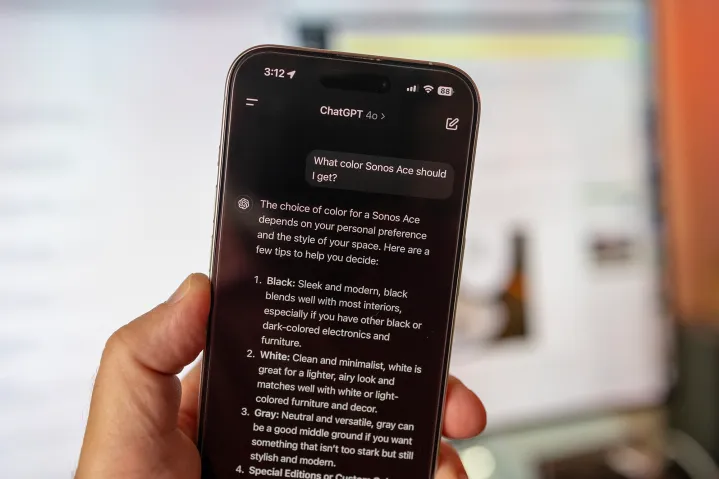
As well as using ChatGPT on your browser you can also use it via the mobile app for both iOS and Android devices. The iOS edition hit an impressive half a million downloads in less than a week of its release.
Using the app is close to identical to the web version and nearly all of the features found on the desktop have been ported to the mobile versions, however it’s worth noting that you need to be logged in to use the app.
The clean interface shows your conversation with GPT in a straightforward manner, hiding the chat history and settings behind the menu in the top right.
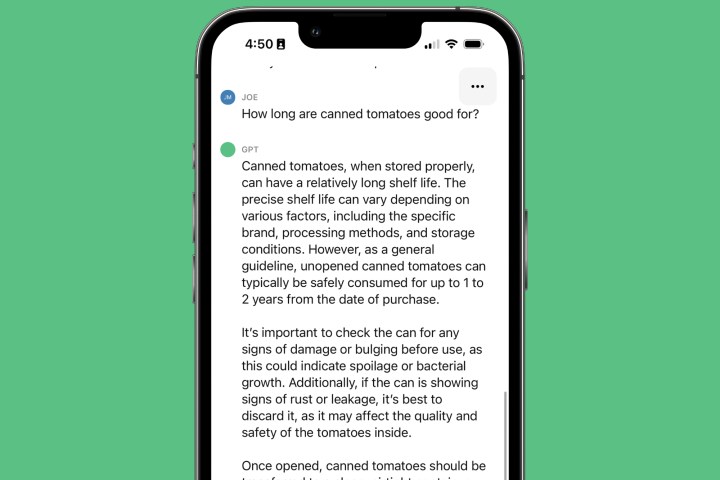
There’s even an official ChatGPT app for the Mac which, shortly after release, was able to be used for free . The app is capable of all sorts of new things that bring Mac AI capabilities to new levels.
Is ChatGPT free to use?
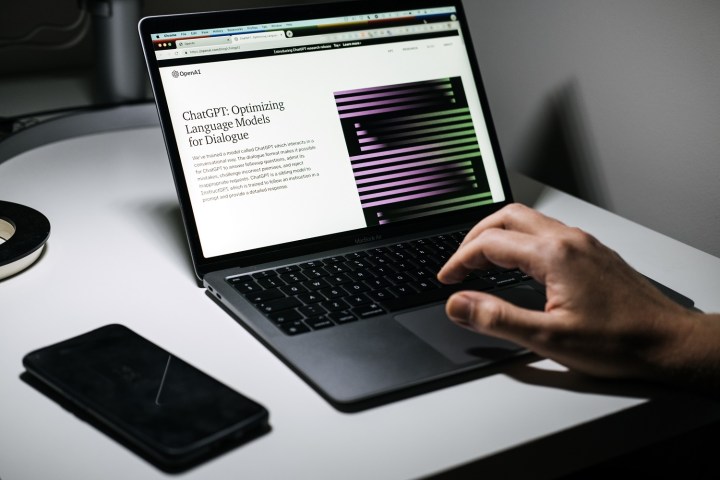
Yes, ChatGPT is free to use however a free tier account comes with some restrictions such a limited amount of queries. When you upgrade to a paid membership you will find that the query limit increases pretty dramatically and grants you access to other tools like image generation and the ability to create customs GPTs.
The company came under fire in September 2024 when news broke that OpenAI could raise subscription prices to more than $2000/month for access to future cutting-edge models.
In December 2024, OpenAI announced a new $200 per month subscription tier, dubbed Pro , which offers users unlimited access to every available model as well as Advanced Voice Mode.
The $20 per month Plus subscription only allows users limited access to OpenAI’s most advanced models and features like the o1 reasoning model and Advanced Voice Mode, making the Pro tier an attractive option for researchers, institutions, and ChatGPT power users.
If you subscribe to Microsoft 365, however, Microsoft will grant you access to the o1 model at no additional charge
It’s not free for OpenAI to continue running it, of course. Initial estimates are currently that OpenAI spends around $3 million per month to continue running ChatGPT, which is around $100,000 per day. A report from April 2023 indicated that the price of operation is closer to $700,000 per day .
What is ChatGPT’s context window character limit?
ChatGPT doesn’t count characters. Instead, its context window limit is measured in “tokens,” each of which is roughly equivalent to one word.
Currently, the context window for the GPT-4 family is limited to 8,192 tokens, or around 6,000 words depending on the text’s complexity.
What is Project Strawberry?
Project Strawberry was the code name for OpenAI’s latest family of “reasoning” models, which reportedly can use logic similarly to humans. The company released Strawberry to the public in September 2024, renaming the two versions “o1-preview” and “o1-mini” for the smaller, more responsive iteration.
The o1 model “has been trained using a completely new optimization algorithm and a new training dataset specifically tailored for it,” OpenAI’s research lead Jerry Tworek, told The Verge . It relies on a combination of reinforcement learning and “chain of thought” reasoning to return more accurate responses than its predecessor models.
o1 and o1-mini are currently only available to pay-tier subscribers (Plus, Teams, Enterprise, and Edu). The company reportedly has plans to eventually release o1-mini to free-tier users but has not disclosed a timeline for that to take place.
In December 2024, OpenAI released the full version of its o1 model, though users will need to subscribe to the Plus tier for limited access, or the Pro tier for unlimited use. The company also teased o1’s successor ( which it is calling “o3” ) later that month. It reportedly does everything o1 can, only better.
Is there a ChatGPT API?
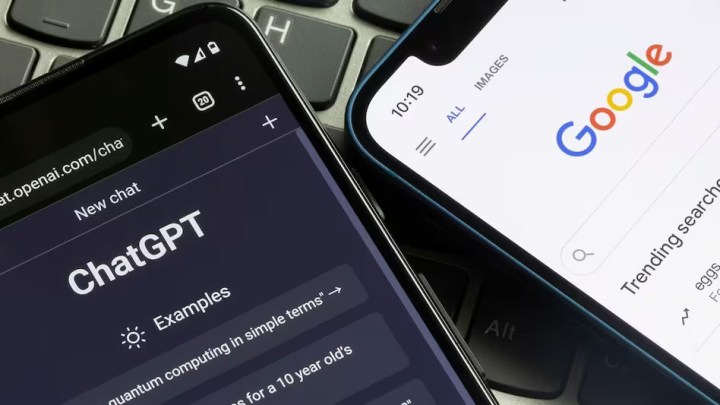
Yes. APIs are a way for developers to access ChatGPT and plug its natural language capabilities directly into apps and websites.
We’ve seen it used in all sorts of different cases, ranging from suggesting parts in Newegg’s PC builder to building out a travel itinerary with just a few words. Many apps had been announced as partners with OpenAI using the ChatGPT API. Of the initial batch, the most prominent example is Snapchat’s MyAI .
Recently, OpenAI made the ChatGPT API available to everyone, and we’ve seen a surge in tools leveraging the technology, such as Discord’s Clyde chatbot or Wix’s website builder . Most recently, GPT-4 has been made available as an API “for developers to build applications and services.”
Some of the companies that have already integrated GPT-4 include Duolingo, Be My Eyes, Stripe, and Khan Academy.
ChatGPT alternatives worth trying

ChatGPT remains the most popular AI chatbot, but it’s not without competition. Microsoft’s Copilot is a significant rival, even though Microsoft has invested heavily with the AI startup and Copilot itself leverages the GPT-4 model for its answers.
Google’s Gemini AI (formerly Google Bard) is another such competitor. Built on Google’s own transformer architecture, this family of multimodal AI models can both understand and generate text, images, audio, videos, and code.
First released in March, 2o23, Gemini is available in 46 languages and in 239 countries and territories. One of its big advantages is that Gemini can generate images for free, while you’ll have to upgrade to ChatGPT Plus in OpenAI’s ecosystem.
Anthropic’s Claude family of AI have also emerged as serious challengers to ChatGPT’s dominance. In June 2024, the AI startup announced that its recently released Claude 3.5 Sonnet model outperformed both GPT-4o and Gemini Pro 1.5 at a host of industry benchmarks and significantly outperformed the older Claude 3.0 Opus by double digits while consuming 50 percent less energy.
Meta, the parent company to Facebook, has also spent the last few years developing its own AI chatbot based on its family of Llama large language models. The company finally revealed its chatbot in April 2024, dubbed Meta AI, and revealed that it leverages the company’s latest to date model, Llama 3 .
The assistant is available in more than a dozen countries and operates across Meta’s app suite, including Facebook, Instagram, WhatsApp, and Messenger.
ChatGPT recently launched a new feature, dubbed ChatGPT Search, in an effort to compete with Perplexity AI .
It bills Perplexity as an “answer engine” which scours the internet for information related to the user’s query, then synthesizes a conversational reply based on what it finds, effectively eliminating the need to click through a page of linked results as one would with a standard Google search.
A study conducted by the Columbia Tow Center for Digital Journalism , however, found that OpenAI’s offering repeatedly, and often confidently, returned incorrect answers to user queries.
Lastly, Apple had long been rumored to be working on an artificial intelligence system of its own, and proved the world right at WWDC 2024 in June, where the company revealed Apple Intelligence .
The AI is “comprised of highly capable large language and diffusion models specialized for your everyday tasks” and designed to help iPhone, iPad, and Mac users streamline many of their most common everyday tasks across apps. Apple officially released its AI to users as part of the iOS 18, iPadOS 18, and macOS Sequoia software releases in fall 2024.
ChatGPT’s numerous controversies
Although ChatGPT is an extremely capable digital tool, it isn’t foolproof. The AI is known for making mistakes or “hallucinations,” where it makes up an answer to something it doesn’t know. Early on, a simple example of how unreliable it can sometimes be involved misidentifying the prime minister of Japan .
Beyond just making mistakes, many people are concerned about what this human-like generative AI could mean for the future of the internet, so much so that thousands of tech leaders and prominent public figures have signed a petition to slow down the development. It was even banned in Italy due to privacy concerns, alongside complaints from the FTC — although that’s now been reversed. Since then, the FTC has reopened investigations against OpenAI on questions of personal consumer data is being handled.
In addition, JPMorgan Chase has threatened to restrict the use of the AI chatbot for workers, especially for generating emails, which companies like Apple have also prohibited internally. Following Apple’s announcement at WWDC 2024 that it would be integrating OpenAI’s technology into its mobile and desktop products, Tesla CEO and sore loser Elon Musk similarly threatened to ban any device running the software from his businesses — everything from iPhones to Mac Studios. Other high-profile companies have been disallowing the use of ChatGPT internally, including Samsung, Amazon, Verizon, and even the United States Congress .
There’s also the concern that generative AI like ChatGPT could result in the loss of many jobs — as many as 300 million worldwide, according to Goldman Sachs. In particular, it’s taken the spotlight in Hollywood’s writer’s strike , which wants to ensure that AI-written scripts don’t take the jobs of working screenwriters. Fat lot of good that did .
In 2023, many people attempting to use ChatGPT received an “at capacity” notice when trying to access the site . It’s likely behind the move to try and use unofficial paid apps, which had already flooded app stores and scammed thousands into paying for a free service.
Because of how much ChatGPT costs to run , it seems as if OpenAI has been limiting access when its servers are “at capacity.” It can take as long as a few hours to wait out, but if you’re patient, you’ll get through eventually. Of the numerous growing pains ChatGPT has faced , “at capacity” errors had been the biggest hurdle keeping people from using the service more. In some cases, demand had been so high that the entire ChatGPT website has gone down for several hours for maintenance multiple times over the course of months.
Multiple controversies have also emerged from people using ChatGPT to handle tasks that should probably be handled by an actual person — like being the mayor of Cheyenne, Wyoming . One of the worst cases of this is generating malware, which the FBI recently warned ChatGPT is being used for. More startling, Vanderbilt University’s Peabody School came under fire for generating an email about a mass shooting and the importance of community.
There are also privacy concerns. A recent GDPR complaint says that ChatGPT violates user’s privacy by stealing data from users without their knowledge, and using that data to train the AI model. ChatGPT was even made able to generate Windows 11 keys for free , according to one user. Of course, this is not how ChatGPT was meant to be used, but it’s significant that it was even able to be “tricked” into generating the keys in the first place.
Are ChatGPT chats private?
All conversations you have with ChatGPT are used by OpenAI to further fine-tune the models, which can involve humans reading through conversations. While that doesn’t mean a human is looking through every single question, your conversations certainly aren’t completely private and OpenAI warns against providing personal information to ChatGPT.
It should be noted that if you don’t delete your chats, the conversations will appear in the left sidebar. Unlike with other chatbots, individual chats within a conversation cannot be deleted, though they can be edited using the pencil icon that appears when you hover over a chat. When you delete the conversations, however, it’s not that ChatGPT forgets they ever happened — it’s just that they disappear from the sidebar chat history.
Fortunately, OpenAI has recently announced a way to make your chats hidden from the sidebar . These “hidden” chats won’t be used to train AI models either. You can also opt out of allowing OpenAI to train its models in the settings.
Who owns the copyright to content created by ChatGPT?
According to OpenAI, you have the right to reprint, sell, and merchandise anything that was created with ChatGPT or ChatGPT Plus. So, you’re not going to get sued by OpenAI.
However, there is great controversy surrounding copyright and AI – with some saying generative AI is “stealing” the work of the content it was trained on. This has become increasingly contentious in the world of AI art. Companies like Adobe are finding ways around this by only training models on stock image libraries that already have proper artist credit and legal boundaries.
The larger topic of copyright law regarding generative AI is still to be determined by various lawmakers and interpreters of the law, especially since copyright law as it currently stands technically only protects content created by human beings.
Will ChatGPT replace Google Search?
It’s a possibility, yes. Numerous companies are working to integrate generative AI features into search. Microsoft started things off by integrating Copilot right into its own search engine, which puts a “chat” tab right into the menu of Bing search.
Google, of course, made its big move with AI Overviews , which uses AI-generated answers in place of traditional search results. Overviews rolled out widely in May 2024, replacing the company’s earlier iteration, Search Generative Experience .
OpenAI released its Google Search/Perplexity AI competitor, called ChatGPT Search , in October 2024. It, like Perplexity , allows users to search the internet for information directly from the chatbot interface. Upon the user’s request, ChatGPT Search will seek out relevant information on the internet, then synthesize that found data into a coherent, conversational reply, without the need to click through a returned list of website links as one would with Google.
Can you write essays with ChatGPT?
While you can use ChatGPT to write essays, this is a very controversial topic considering people may achieve grades based on something outside of their own knowledge.
However, ChatGPT has demonstrated the ability to earn students surprisingly good grades in essay writing. Some generative AI tools, such as Caktus AI , are built specifically for essay writing.
Can ChatGPT write and debug code?
Absolutely. It’s one of the most powerful features of ChatGPT. As with everything with AI, you’ll want to double-check everything it produces, because it won’t always get your code right.
Developers have used it to create websites, applications, and games from scratch — all of which are made more powerful with GPT-4, of course. A recent benchmark test found that both of OpenAI’s newest models, o1-preview and o1-mini, can code with nearly the same capability and fidelity as human data engineers.
Can ChatGPT’s outputs be detected by anti-plagiarism systems?
There are multiple anti-plagiarism systems that have been developed specifically to detect the use of AI in school or university work.
While some schools are optimistic about the use of AI within the classroom, others aren’t very welcoming of the software with many institutions banning the use of ChatGPT in schools .
ChatGPT launched an updated version of its own plagiarism detection tool in January 2023, with hopes that it would squelch some of the criticism around how people are using the text generation system.
It uses a feature called “AI text classifier,” which operates in a way familiar to other plagiarism software. Third party developers have also stepped in with their own offerings, such as Plagiarism Checker.

